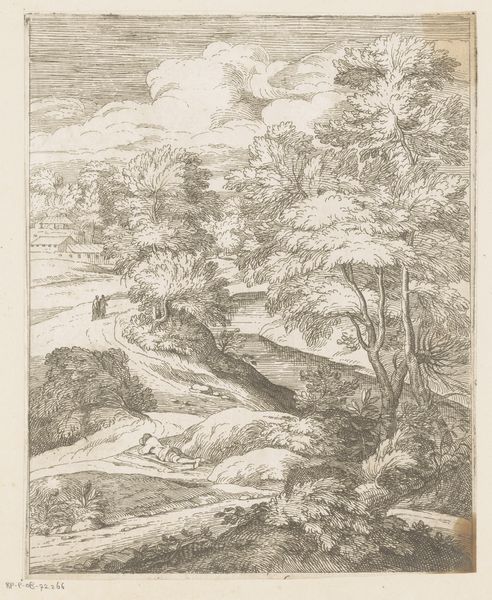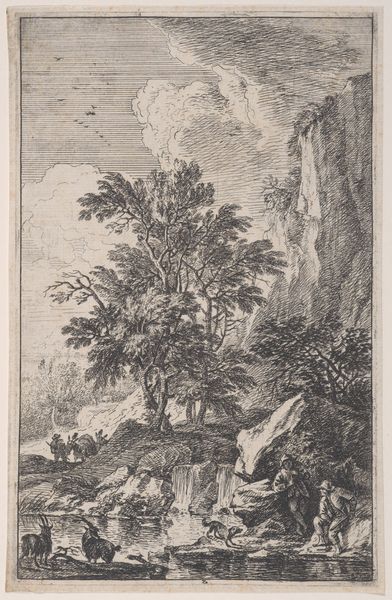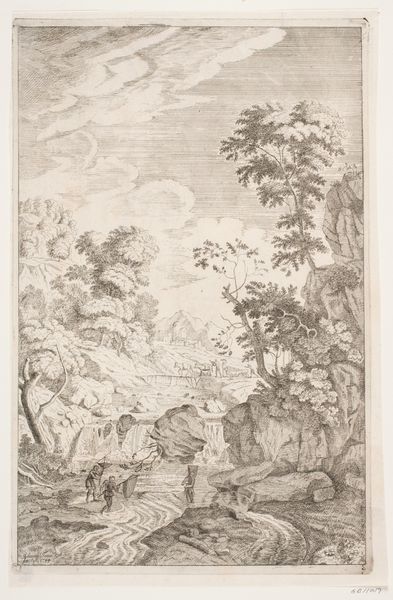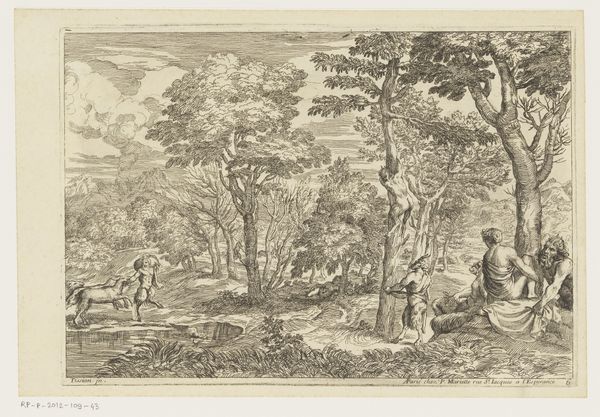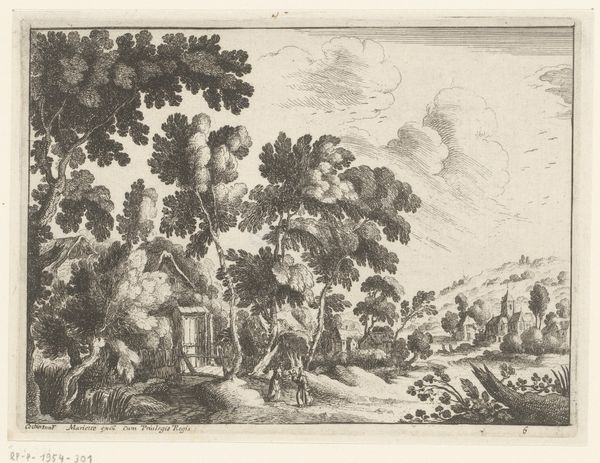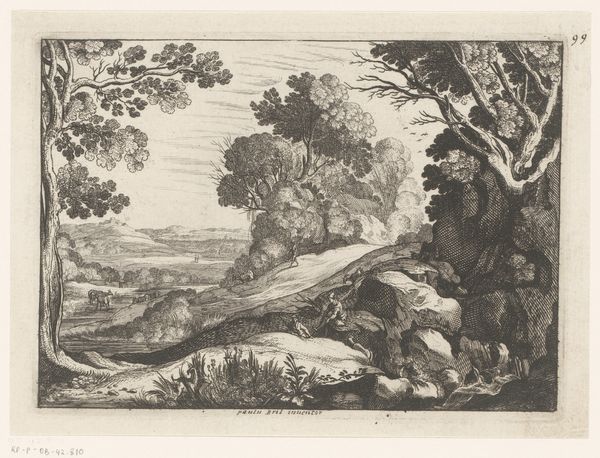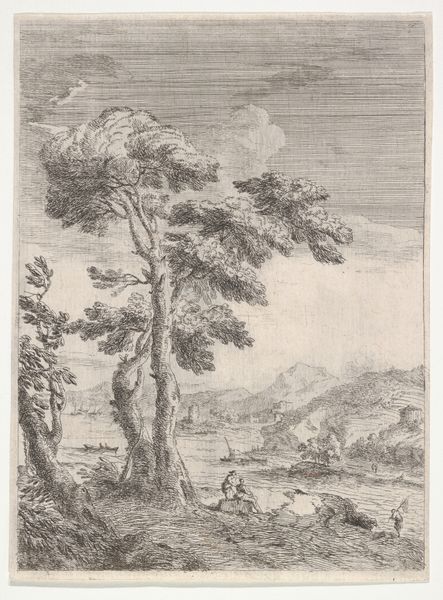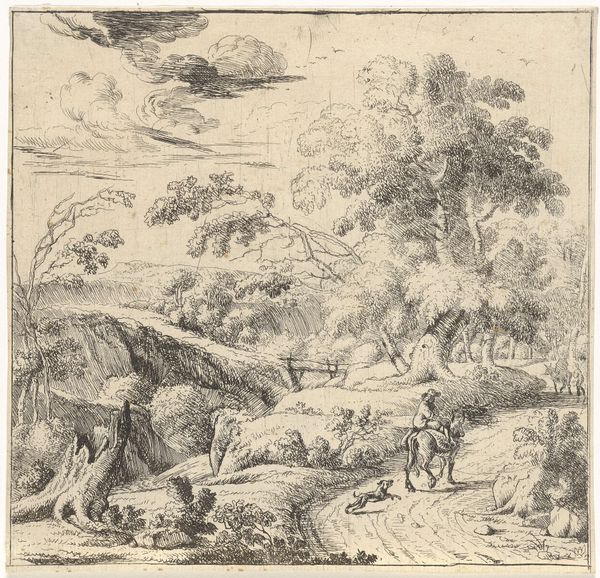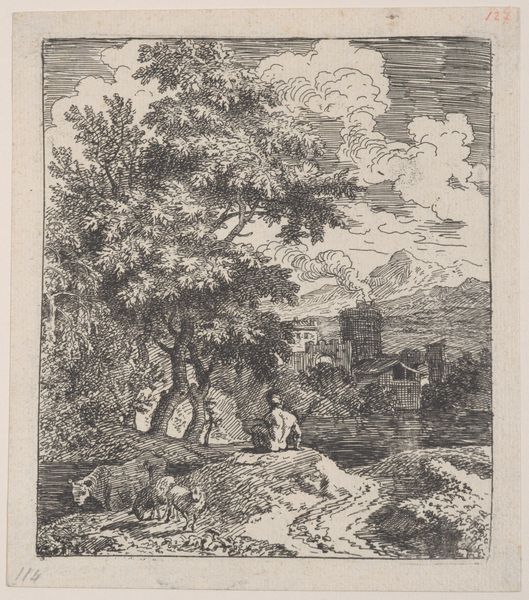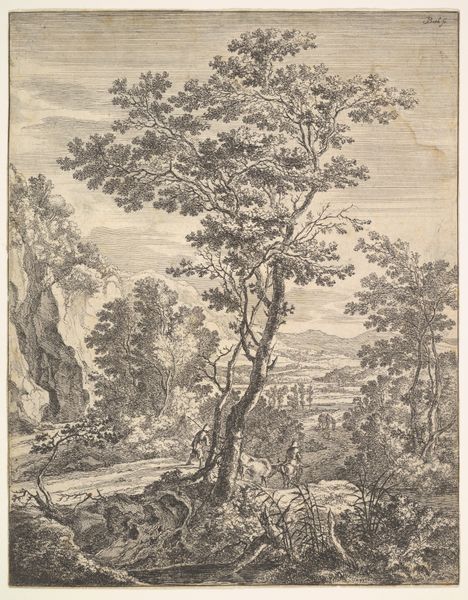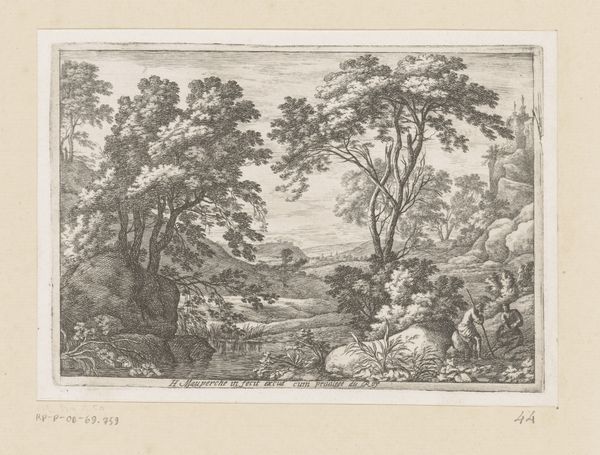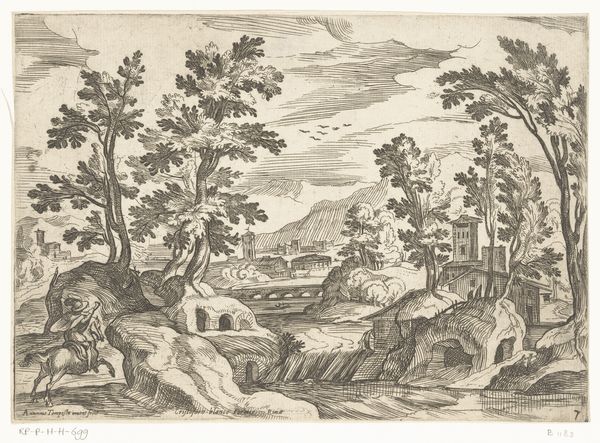
print, etching
#
baroque
# print
#
etching
#
landscape
#
etching
#
figuration
#
history-painting
Dimensions: height 275 mm, width 215 mm
Copyright: Rijks Museum: Open Domain
Jean Pesne made this etching, "Landscape with Saint Jerome," sometime in the 17th century. The image is created by incising lines into a metal plate, inking the surface, and then using immense pressure to transfer the ink onto paper. This intaglio process is all about controlled force. Look closely, and you’ll see how the varying weight of the lines defines the forms, from the billowing clouds to the rugged rocks where Jerome sits. The printmaking process itself has social significance. Unlike painting or sculpture, etching allows for the production of multiple identical images. This opened art to a wider audience, fueling a growing market for affordable artworks. The fine lines of the etching medium also invite closer looking, turning viewers into active participants, poring over the details of the image. The beauty of this work lies not just in the image it portrays but also in the ingenuity and labor involved in its creation. It reminds us that art is not just about what we see, but how it is made and how it circulates in the world.
Comments
No comments
Be the first to comment and join the conversation on the ultimate creative platform.
